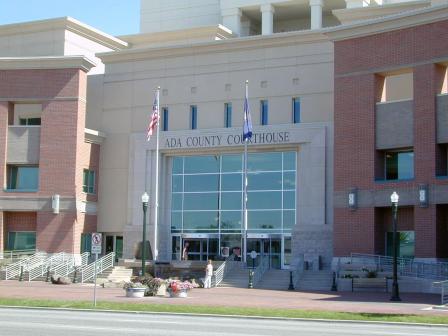RHC for Municipal Governments
- About this sector
- Sector opportunities and challenges for project development
- Cost of RHC technologies
About This Sector
In 2003, there were an estimated 425,000 local government-owned buildings across the United States.1 These buildings serve educational, office space, public assembly, service, and public order and safety purposes. Together, these buildings used an estimated 800 trillion Btu of energy for heating and cooling applications:2
- 333 trillion Btu for space heating
- 88 trillion Btu for space cooling
- 57 trillion Btu for water heating
In addition to local-government buildings, an additional 210,000 buildings are owned by state and federal governments.3
Sector Opportunities and Challenges for Project Development
Several factors make the municipal government sector a good candidate for renewable heating and cooling (RHC) projects:

- According to the U.S. Department of Energy, energy can account for as much as 10 percent of a local government’s annual operating budget—a proportion that is likely to grow as energy costs rise.4 Renewable heating and cooling resources can transform volatile and variable energy costs into known fixed costs.
- This sector can often take a longer-term investment perspective as a result of its typical stature and longevity within the community. Many municipal government institutions have been operating for decades and are likely to remain in operation for many more years.
- Local governments often like to lead by example. Renewable heating and cooling projects can serve as examples for residents and commercial interests within the community.
- Space heating and water heating together account for nearly half of total municipal building energy consumption. Renewable heating and cooling technologies can help address the energy, economic, and environmental aspects of this energy use.
- Deploying renewable heating and cooling technologies can support the local economy and create jobs.
Renewable heating and cooling projects in this sector also face some challenges:
- The municipal sector can be highly budget-constrained and can find difficulty in paying the high upfront costs associated with renewable heating and cooling projects. Municipalities often look to develop projects through third-party ownership or ESCO financing structures.
- Because municipal government institutions are non-profit, they will be unable to take advantage of tax-based incentives and depreciation schedules afforded to commercial taxable entities.
- Many municipal buildings are of older construction, which might require additional structural analysis or design considerations, leading to higher project costs.
- Some municipalities may lack the necessary internal resources or expertise to adequately manage the planning and implementation of renewable heating and cooling projects. This challenge can also extend to a lack of “political will” within the decision-making process or result in inaction due to cyclical changes in leadership.
Costs of RHC Technologies
The total cost of developing renewable heating and cooling systems can vary based on a number of factors, including the state policy environment, physical geography, available incentives, labor rates, and more. The following cost information is sourced from the National Renewable Energy Laboratory (NREL) 5 and should not be interpreted as statistically accurate or sector-specific, but instead should be taken only as rule-of-thumb information and used only for a first-pass screen of economic viability. Visit NREL's website for more detailed information about other costs and typical project lifetimes.
| Technology type | Mean installed cost ($ per square foot) |
Installed cost range (+/- $ per square foot) |
Operation and maintenance cost |
|---|---|---|---|
| Solar water heating: flat-plate and evacuated tube collectors |
$141 | $82 | 0.5 to 1.0% of initial installed cost |
| Solar water heating: plastic polymer collector (unglazed) |
$59 | $15 | 0.5 to 1.0% |
| Technology type | Mean installed cost ($ per ton) |
Installed cost range (+/- $ per ton) |
Operation and maintenance cost |
|---|---|---|---|
| Ground source heat pump | $7,518 | $4,164 | $109 +/- $94 |
| Technology type | Mean installed cost* ($ per kilowatt) |
Installed cost range (+/- $ per kilowatt) |
Fixed operation and maintenance cost ($ per kilowatt) |
|---|---|---|---|
| Biomass wood heat* | $600 | $361 | $91 +/- $33 |
*Biomass wood heat converted from thermal energy capacity (Btu per hour)
- Learn more about solar, geothermal, and biomass technologies.
- Learn more about financial incentives for RHC.
1 U.S. Energy Information Administration. 2008. 2003 Commercial Buildings Energy Consumption Survey. Table B1. Summary Table: Total and Means of Floorspace, Number of Workers, and Hours of Operation for Non-Mall Buildings, 2003.
2 U.S. Energy Information Administration. 2008. 2003 Commercial Buildings Energy Consumption Survey. Table E1. Major Fuel Consumption (Btu) by End Use for Non-Mall Buildings, 2003.
3 U.S. Energy Information Administration. 2008. 2003 Commercial Buildings Energy Consumption Survey. Table B1. Summary Table: Total and Means of Floorspace, Number of Workers, and Hours of Operation for Non-Mall Buildings, 2003.
4 U.S. EPA. 2011. Energy Efficiency in Local Government Operations: A Guide to Developing and Implementing Greenhouse Gas Reduction Programs.
5 National Renewable Energy Laboratory. 2013. Distributed Generation Renewable Energy Estimate of Costs. Updated August 2013.
